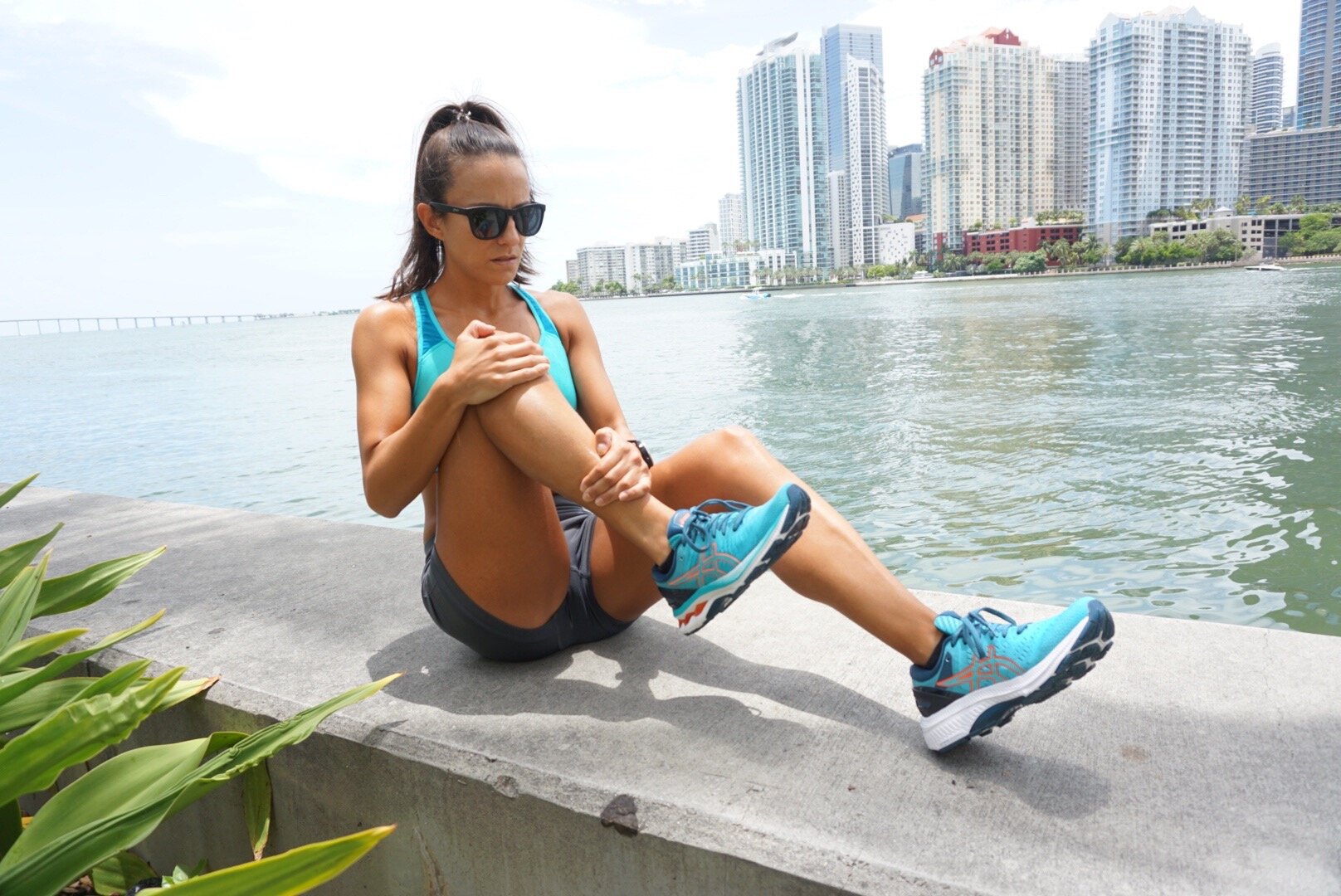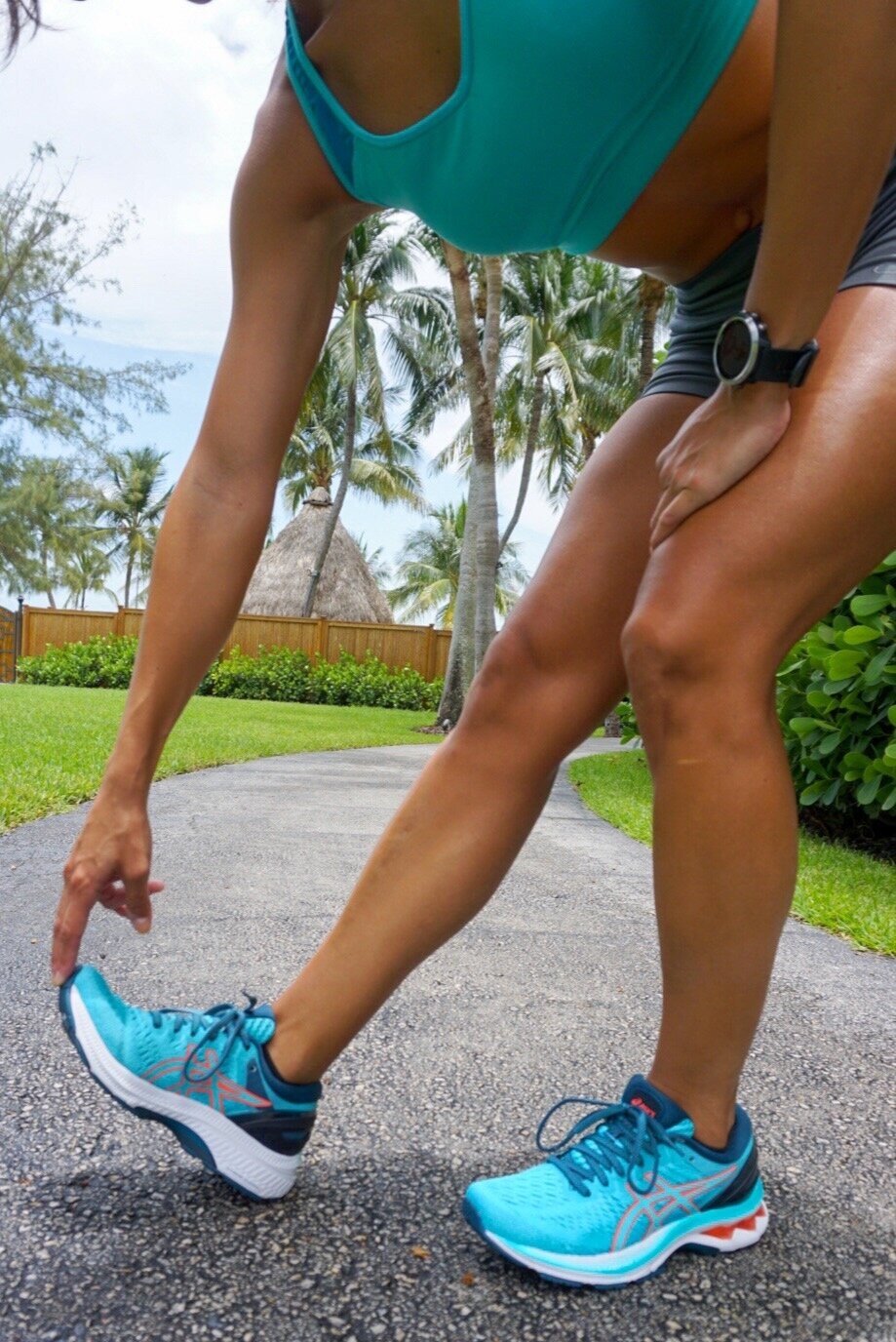Sponsored by Zappos Running. All opinions are my own.
No races? No problem! You don’t need a race to keep on running. It’s true we find a good amount of motivation when we sign up for a big race, so it’s normal if we are feeling a bit bummed during this time as mostly all races have been canceled for the year. The thing about running that we often forget is that you can do it year round and get good at it, too—whether or not you have a race on the horizon. I, myself, think of other ways to get motivated. I create a list of short term goals for running that get me just as excited as my race goals do, and remind myself that reaching these smaller goals will only lead to better progress when I can finally race again.
Another way I motivate myself is with cool, new running gear. My favorite part of my wardrobe is running shoes, of course! I recently got another brand new pair from Zappos—the Asics GEL-Kayano 27. I shop from Zappos all the time, since they have an amazingly large selection of everything. I am a VIP member which also means I get free, super fast shipping, plus free returns for a year! I always have the best shopping experience and find everything I am looking for.
Next Level Performance
With the many months we have until our next races, it’s a great time to break up the time into different training blocks. One of the best ways to improve in distance running is to focus on the whole package, which takes time! So having lots of it is a good thing! Running in the Asics GEL-Kayano 27 is a perfect option if you are looking for a high-level stability shoe. My first impression of the shoe was how lightweight it is, especially after reading about the different systems that make up the shoe, which I thought would make the shoe feel heavy.
As I usually do with every new pair, I tried out the Kayano 27 for the first time on a short easy run. The first thing I noticed was how conforming the shoe felt during every part of the gait cycle. This is my favorite feature of Asics—the GEL that runs across many of their styles. It’s what lets the shoe move with the foot. Shoes without this feature tend to feel stiff when you push off the ground with the toes. The Kayano 27 does a good job with this transition and provides a springy step.
Built-In Comfort
Since I have a history of ankle and foot injuries and have dealt with plantar fasciitis for almost my whole running life, I try my best to find shoes that have a decent amount of cushioning but still provide the responsiveness I need for speed work. I have a pet peeve with running shoes—shifting of my heel, which is non-existent in the Asics GEL-Kayano 27! The external heel counter of the shoe truly holds the heel in place and makes it feel “locked”, so you can count on these shoes to feel more fitted than most other styles.
The DUOMAX support system is a game changer for those of you who overpronate naturally while you run. It’s what gives the shoe the stability aspect and controls that inward rolling of the foot. Not controlling overpronation during running can lead to a long list of injuries such as direct ankle and foot problems, runner’s knee, IT band syndrome, and low back pain. It’s important for runners to pay attention to this when choosing the right shoe. This pair also has a specially designed trusstic system in the women’s shoe compared to the men’s, with softer foam.
I’m excited to keep using my GEL-Kayano 27 for the bulk of my training since so far I find that they truly protect my feet from the constant impact of my daily running. I highly recommend this pair for medium to long runs at a consistent pace, although they are pretty good at quick pace changes, as well! I’ll keep you all updated as I continue to break them in and use them for different distances and run types. In the meantime, check out all of the colors on the Zappos site and don’t forget about the VIP membership benefits!








